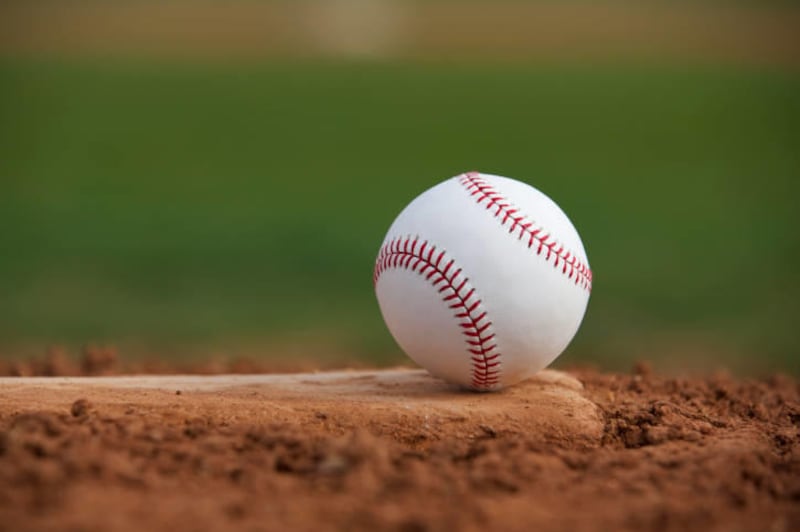SALT LAKE CITY
Thirty years ago this week I was sitting in the upper deck of Candlestick Park in San Francisco awaiting the start of Game 3 of the 1989 World Series when a 6.9-magnitude earthquake stopped everything.
Three takeaways from that single event have stayed with me ever since.
1: Life is unpredictable.
There was zero reason to think a ballgame would not take place. It had been a warm, windless day with nary a cloud in the sky, portending a perfect evening of baseball watching.
A rainout? Not a chance. A player’s strike that would wipe out the World Series? Not for five more years. There wasn’t even a remote possibility that the visiting team would somehow not show up by game time, since in this case the visiting team was the Oakland A’s, who had to come all the way from 10 miles across the bay.
I was settling into my assigned seat in the auxiliary press area in the upper deck outside the main press box when the ground started shaking. It was 5:04 p.m. I remember being mesmerized by the glass-enclosed loge boxes a deck below as they bowed in and out like waves, but for some reason did not break.
The shaking lasted 15 seconds, although it seemed much longer. When it was over the writer from Philadelphia sitting next to me stood up and said, to no one in particular, “I’ve got to go outside for some air.”
I did not point out to him that we were already outside.
At least the sports writer from Philadelphia wasn’t the maintenance worker who was standing at the top of a crane high above the stadium changing a light bulb when the quake hit.
I can’t imagine him talking about anything else ever since.
Beyond canceling the game, damage at the ballpark was minimal, to the chagrin of legions of Giants fans who had been hoping for years that windy Candlestick, aka the coldest ballpark in baseball, would disappear. But reports soon filtered in about more serious destruction elsewhere. A deck on the Bay Bridge freeway had collapsed and there were fires in some parts of San Francisco. All told, 63 people would die and another 3,757 would be injured.
I spent the next two days in San Francisco waiting to get a flight back to Salt Lake City. The World Series was put on hold; it wouldn’t restart for another 10 days. I walked around the city so I could file earthquake stories instead of baseball stories for the Deseret News.
I walked through glass from broken windows in Union Square. In the Marina District I saw residents standing outside houses that had, ironically, survived the famous 1906 earthquake but were now deemed unsafe. Much of the city was without power.
There was damage to roads and infrastructure that was harder to see and would cost billions to restore. But for all that, the city I observed stood largely intact. The vast majority of buildings, homes and roads remained relatively untouched.
It wasn’t until I got back to Utah that people let me know about the life-threatening situation I’d been a part of. They’d been watching nonstop news coverage that focused on the collapsed freeway, the fires in the Marina District, the power outages and the shattered storefronts. From their perspective, San Francisco was in ruins and I was lucky to be alive.
It affected the way I’ve looked at disaster news ever since. Whenever I see footage of floods, earthquakes, hurricanes and tornadoes, I can’t help but be just a bit skeptical as to just how widespread the destruction really is.
That was takeaway two.
The third takeaway was how fast life moves on.
After a week I returned to San Francisco to cover the rest of the World Series. I checked back into the Marriott Hotel by Union Square. The night of the quake I’d never made it to my room. I slept in a cot in the big convention center ballroom on the lower level, next to a thousand others, because the power was out and no one was allowed up the stairs.
Now, my room was ready and waiting, the elevator was running, the hotel was gleaming. Outside in Union Square, the glass had all been swept up, the storefront windows replaced. The cable cars and the road between Oakland and San Francisco was up and running.
That evening at Candlestick Park, the Oakland A’s and San Francisco Giants played game three in front of 62,000 fans, with 10 heroes from what had begun as the Bay Series and would now be known as the Earthquake Series — policemen, firefighters and medical personnel — simultaneously throwing out the first pitch.
Just 10 resilient days later, it was “Play ball.”
* * *
Earlier this summer my sons and grandsons were in San Francisco, and for old times’ sake, I insisted we stay at the Marriott by Union Square. There was a ballgame that night and we walked the few short blocks to Oracle Park to watch the Giants play the Mets.
At the hotel, I wanted to show off the ballroom where everyone slept the nights of Oct. 17-18, 1989 — Camp Marriott they called it — but it was closed off for remodeling.
I also wanted to drive by Candlestick Park, but we couldn’t do that either because, giving way to the aforementioned Oracle Park, the stadium had been demolished four years ago. A news story said they salvaged some of the fixtures, including several thousand seats that were sold to the public.
There was nothing in the article about the light tower. I hope they gave it to that maintenance man. He deserved it.


